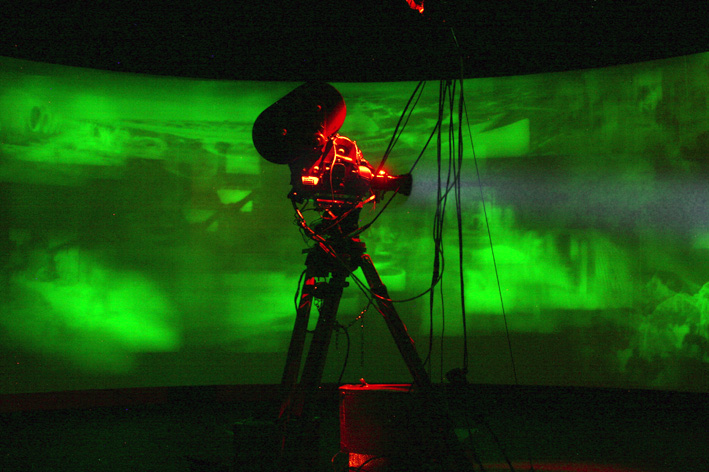Shows
Yebizo Festival 2011


One of the highlights of Tokyo’s winter art calendar is the Yebisu International Festival for Art & Alternative Visions (known as “Yebizo”) held in the Tokyo Metropolitan Museum of Photography. It is an annual exhibition, film program and forum that explores the question “What is an image?” Less than twelve months after the Tohoku earthquake of March 2011, this year’s theme, “How Physical”, was positioned as a response to these events.
As a title, “How Physical” could have been misleading. Although in the festival’s introduction curator Keiko Okamura described feeling, like other viewers, strong emotions on seeing news images of the earthquake and tsunami, Yebizo did not try to mimic the sensation of watching such media images with a program that might have provoked similarly strong reactions through art. Instead, as Okamura explained, “ [being] confronted with images of such overwhelming power . . . exposed the fragility of the foundations on which images are built”. The chosen theme was a much more specific and soundly realised exploration of the physicality, or materiality, of image media, as well as the physical aspects of their dissemination. Foregrounded in this year’s event were works that heightened the physical nature of image-making, such as new and old camera technologies and animation techniques, alongside others that presented and disseminated images using innovative spatial dynamics, as well as other unfamiliar formats.
In terms of the materiality of the medium, Japanese artist Ryusuke Ito’s work exposes the “secret” processes of film-making, while paying homage to Sergei Eisenstein’s silent masterpiece Battleship Potemkin (1925). Ito’s video installation Film Studies: Odessa’s Steps (2006) recreates a famous scene in which a baby carriage travels shakily down what seems like an endless flight of stairs, in the city of Odessa. Ito’s work recaptures the essence of this scene using a hand-made kinetic model of a miniature baby-carriage apparently traveling down an endless set of stairs, on a motorized circular board—while a live, close-up video image is projected alongside, directly into the space. When looking only at the projected video image, the work sustains that same feeling of suspense found in Eisenstein’s original. However, in Ito’s installation, audiences also see that the steps are in fact always in mechanical rotation, giving the illusion of endless motion.
The “film studies” of the title suggests a study in the artistic sense, in which an artist executes a quick, small sketch or painting in order to experiment before beginning a major work. Given the tiny scale of Ito’s creation, this could very well be a description of how the artist views his own video works—an experiment exploring the techniques of great pioneer filmmakers in history.

The other aspect of the curatorial theme, the physical potential for space when viewing images, was strongest in German artist Julius von Bismarck’s The Space Beyond Me (2010). His video installation was a unique combination of experimentation with image recording and projection. Adding to the elevated atmosphere surounding this work was its limited number of viewwing sessions per day. As the audience handed over their tickets, everyone was ushered into a dark room by attendants. It slowly become apparent that the walls of the room were circular aside from the single entrance. When the projection begins, the image of a naked man can be seen, wandering disorientated and alone in a desert settting. As the man walks, the projector moves with him; when he climbs down, the projector tilts down as well.
What von Bismarck achieves is an experience resembling the way the images were originally recorded. The space in which the video’s action was filmed is theoretically recreated by using almost all the 360-degree potential of the installation space as a single, unified “landscape”. Adding to the effect is the artist’s use of simple, glow-in-the-dark paint on the walls, leaving luminiscent outlines of the images in the darkness, when the projector stops. With a combination of both simple, analog and high-tech effects, the outcome is a totally immersive experience, in which the audience quite literally follows the protagonist on his desert journey across all the surrounding walls.
Other notable inclusions exploring filmmaking in the Yebizo festival exhibition included Marijke van Warmerdam’s film projector installation, Passage (1992), an architectual installation by Ryoji Suzuki, and a showcase of the Tokyo Cinema Company’s pioneer use of time-lapse and photomicrography in science and nature films since the 1950s. Johann Lurf's The Quick Brown Fox Jumps Over the Lazy Dog (2009) is a work spliced together from thousands of film frames, all taken from different movies, and played at the speed of 24 frames per second; while William Kentridge's most recent paper-and-charcoal animation, Other Faces (2011), also stood out among the many digital creations.
Film screenings also accompanied the exhibition, including the program “A Rectangular Prism” featuring Walter de Maria, Tony Conrad, Ernie Gehr and Kirk Tougas, curated by Tokyo local Jim O’Rourke. Included here were “Document Oral History - Sound of Waves” and “Sendai Short Film Project,” two significant film projects, directly linked to the March 11 disaster and its aftermath.







